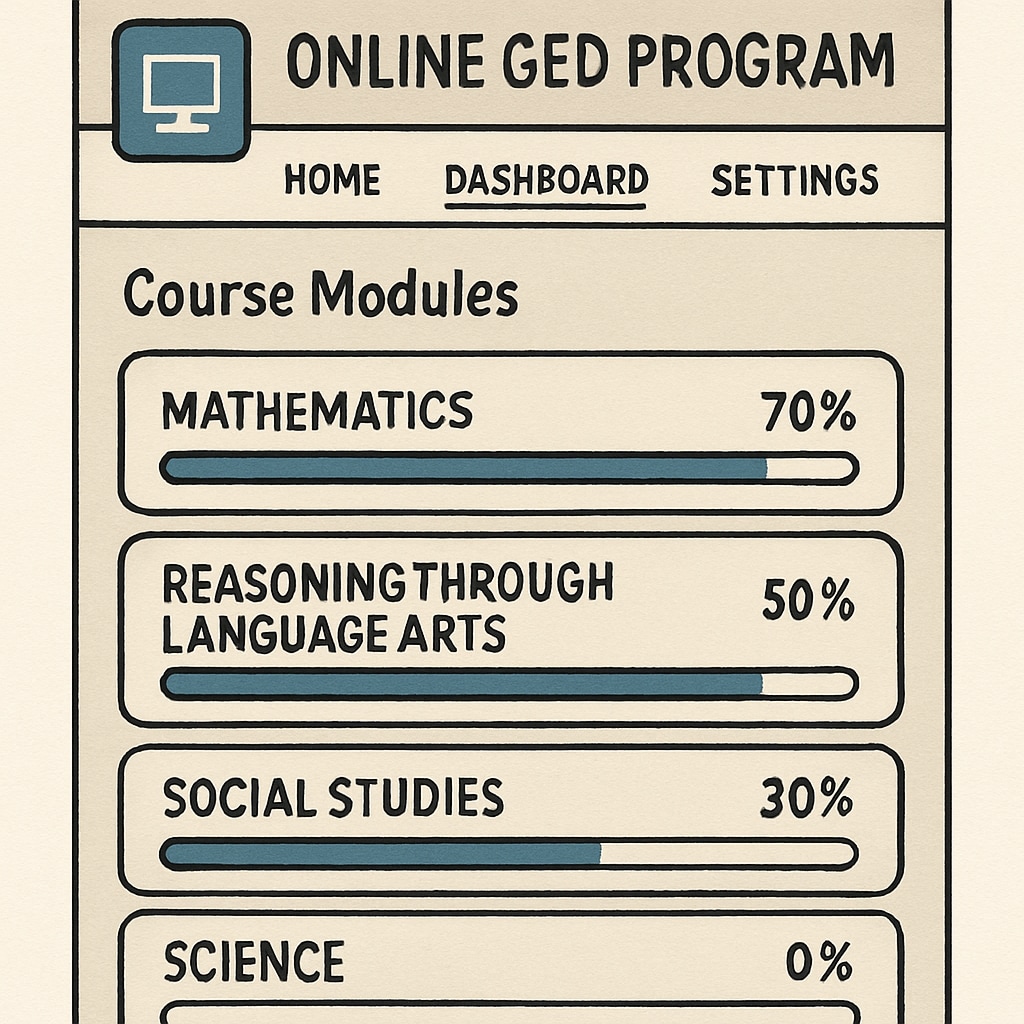The search for reputable online GED/high school diploma programs in the U.S. can be overwhelming, especially given the abundance of options available. However, it’s crucial to identify accredited and reliable programs to ensure your diploma or GED certification holds value. Whether you’re seeking to continue your education or expand career opportunities, understanding how to navigate online options for GED and high school diplomas is essential. This article will guide you through the process, offering practical tips, trusted resources, and advice on avoiding common pitfalls.
Understanding GED and High School Diplomas
Before diving into specifics, it’s important to understand the difference between a GED and a high school diploma. A GED (General Educational Development) is a test-based certification designed for individuals who did not complete traditional high school education. It assesses proficiency in subjects like math, science, social studies, and language arts. On the other hand, a high school diploma is earned through coursework completion, typically spanning four years in a traditional or online high school setting.

Why Accreditation Matters
Accreditation is the cornerstone of any reliable GED or high school diploma program. Without proper accreditation, your certification may not be accepted by colleges, employers, or government agencies. Accredited programs follow strict educational standards and are recognized by official bodies such as the Department of Education. To verify accreditation, you can visit websites like the U.S. Department of Education Accreditation Resources or check the program’s affiliation with recognized accrediting agencies.
Key points to consider when evaluating accreditation:
- Ensure the program is recognized by a national or regional accrediting body.
- Check for state approval if pursuing a high school diploma.
- Avoid programs that claim to offer “instant diplomas” or certifications without effort.
Evaluating Online Programs
Not all online GED or high school diploma programs are created equal. To choose the right program, you need to evaluate factors such as cost, curriculum, technological requirements, and student support. Additionally, consider the program’s reputation among former students and industry professionals.
Here are some criteria to help you evaluate online programs:
- Cost: Compare tuition and fees across different programs to ensure affordability. Look for financial aid options.
- Curriculum: Ensure the program covers essential topics and provides preparation for GED tests or high school coursework.
- Support Services: Check for resources like tutoring, career counseling, and technical support.
- Reviews: Read testimonials and reviews from past students to gauge the program’s effectiveness.

Common Pitfalls to Avoid
Unfortunately, the online education space is rife with scams and unaccredited programs. To protect yourself, be vigilant and steer clear of programs that promise unrealistic outcomes, such as “earning a diploma in 24 hours” or “no exams required.” Such claims are red flags and often lead to certifications that hold no value.
Key warning signs:
- Lack of transparency about accreditation or program details.
- Excessive fees or hidden charges.
- No access to real instructors or student support services.
- Websites that appear outdated or poorly maintained.
Trusted Resources for Online GED and High School Diploma Programs
To help you start your journey, here are some reliable online GED and high school diploma programs:
- Official GED Testing Service: The official platform for GED preparation and testing.
- K12 Online School: Offers accredited high school diploma programs tailored for online learners.
- U.S. Department of Education: Provides a directory of accredited online schools.
By leveraging trusted resources and carefully evaluating your options, you can confidently achieve your educational goals and open doors to greater opportunities.
Readability guidance: Use short paragraphs and bullet points to summarize key information. Keep sentence structures straightforward while incorporating transition words for flow (e.g., however, therefore, in addition). Avoid excessive passive voice and maintain an active, engaging tone.


